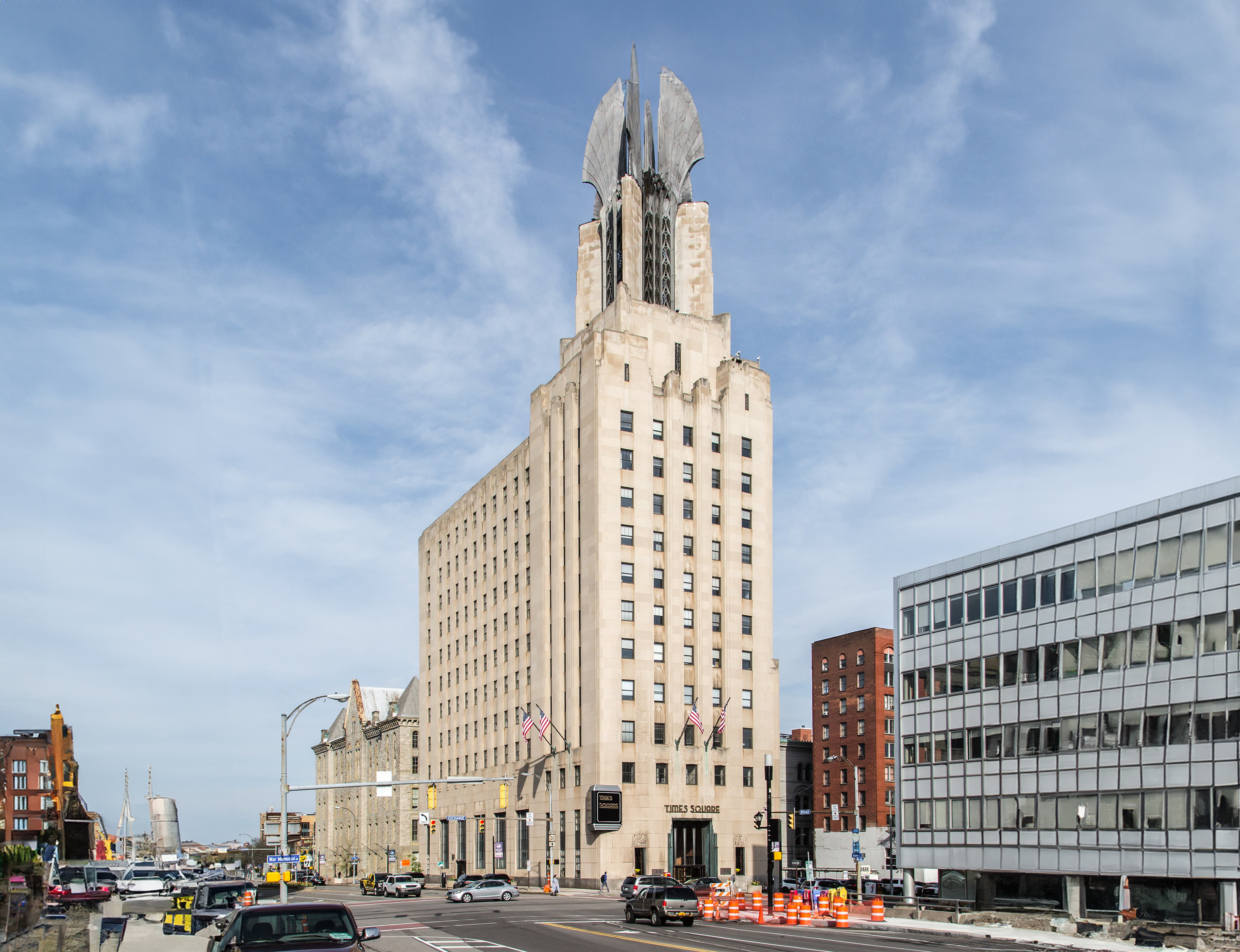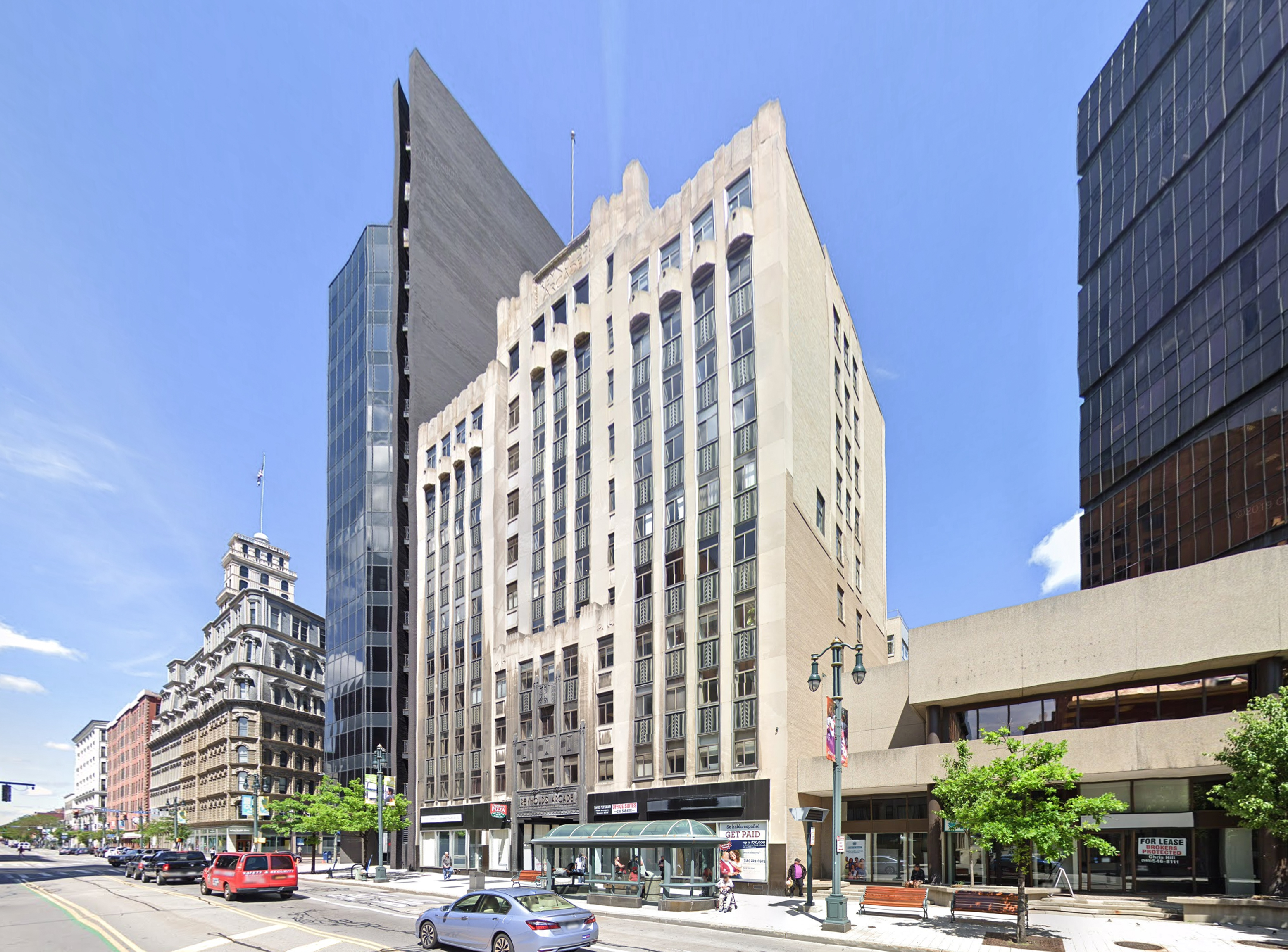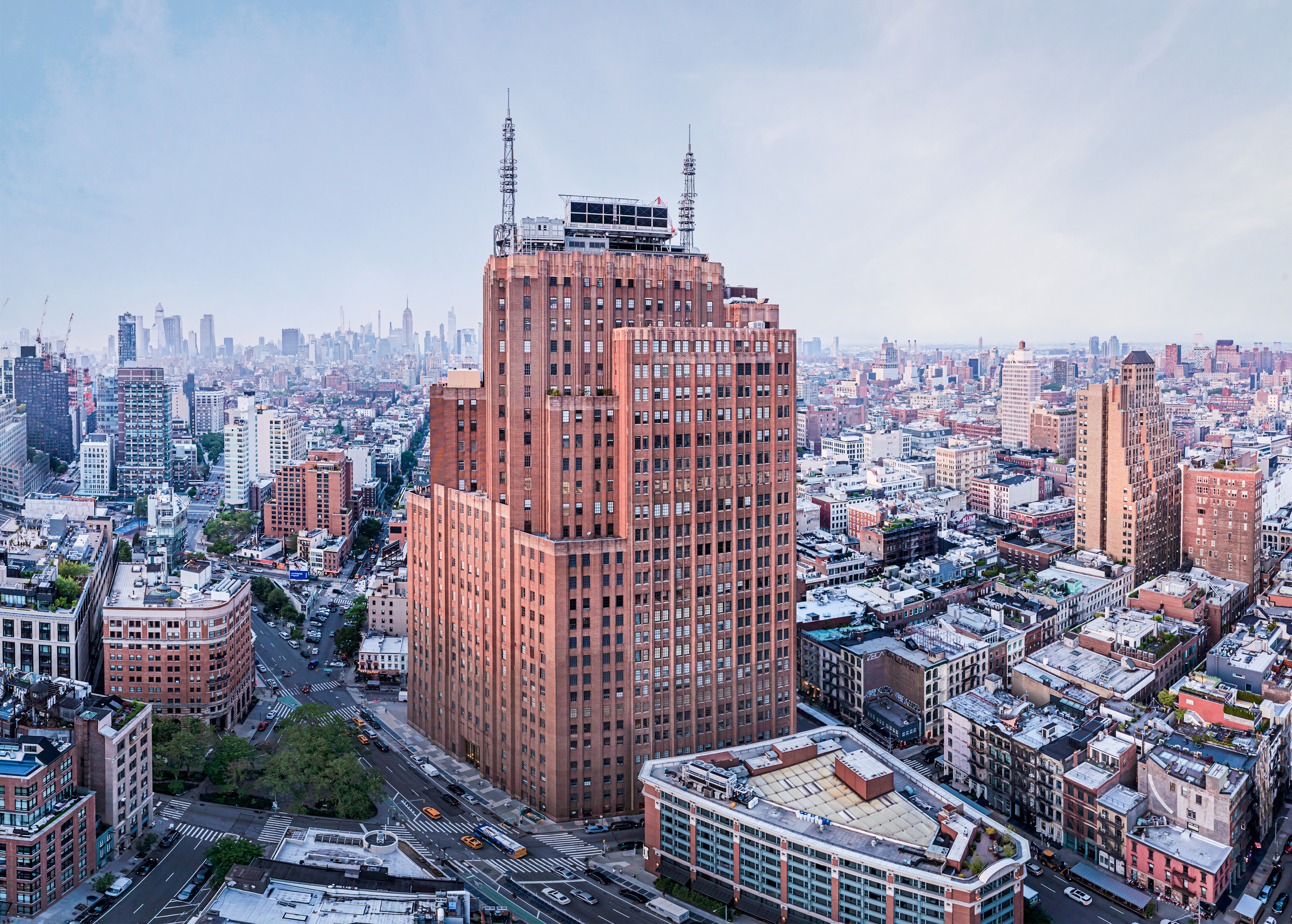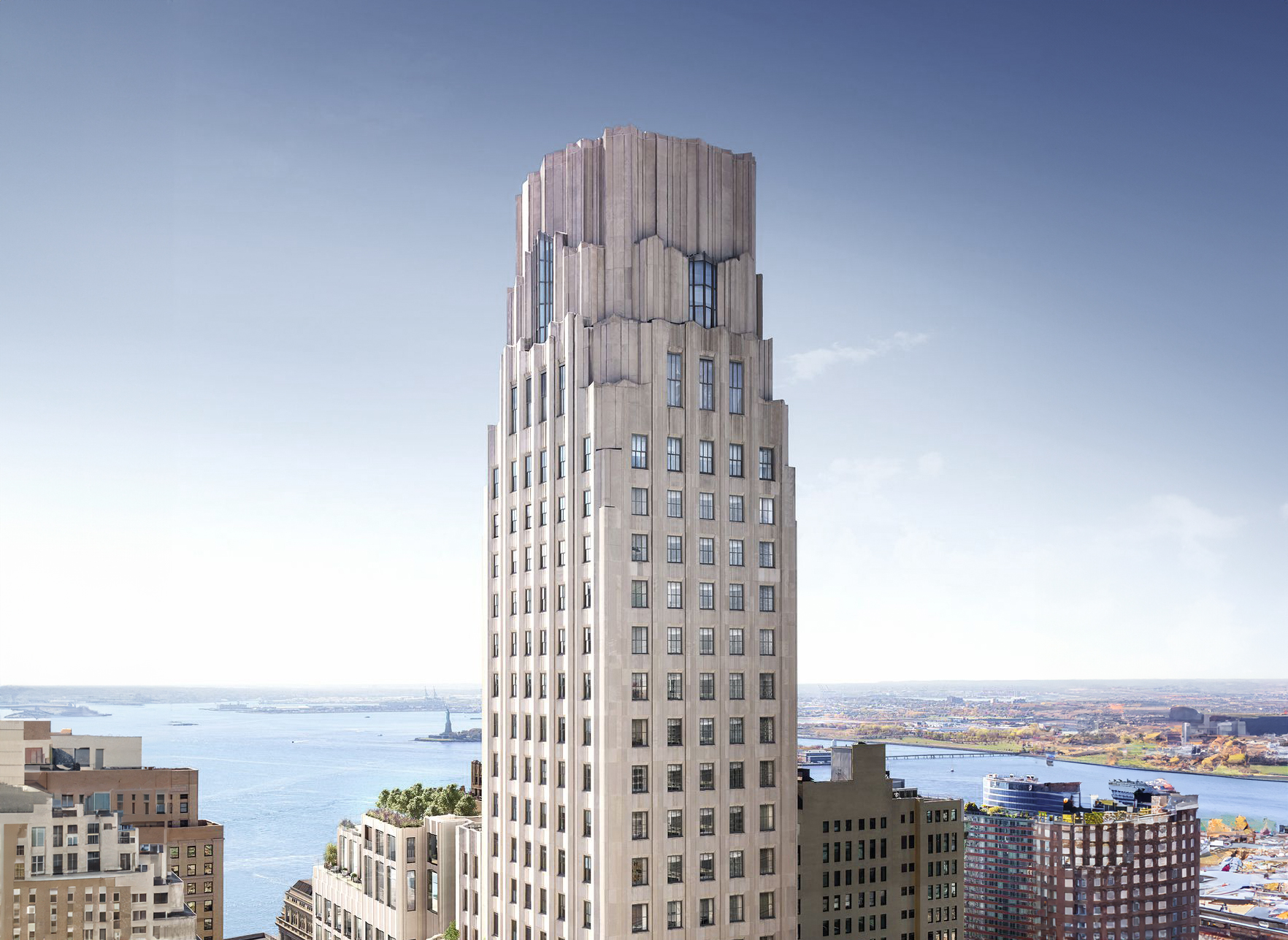The Rochester Times Square Building is an Art-deco skyscraper designed by Voorhees, Gmelin and Walker , and built between 1929 and 1930, for a reported $1.50 million dollars, in Rochester, NY.
Rochester Times Square Building is not the only name you might know this building by though. It is common for companies to want to attach their names to iconic buildings when they move in, or for the general public to come up with nicknames, and this one is no exception. The building has changed names several times over the years, and is also known as:
- Genesee Valley Trust between 1930 and 1955.
- Times Square Building from 1955 until this day.
Its precise street address is 45 Exchange Street, Rochester, NY. You can also find it on the map here.





